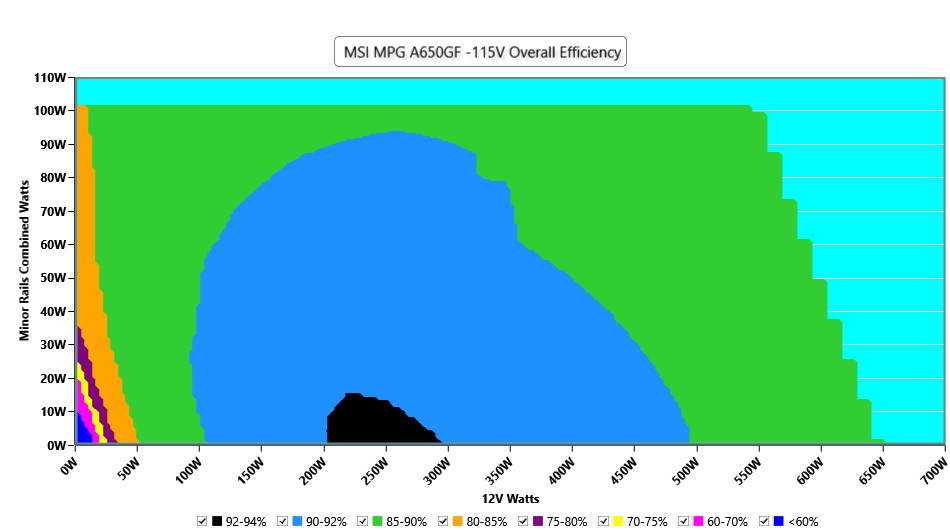Why you can trust Tom's Hardware
Protection Features
Check out our PSUs 101 article to learn more about PSU protection features.
| OCP (Cold @ 24°C) | 12VMBPH: 31.5A (125.99%), 11.940V 12VCPU: 32.2A (128.8%), 11.836V 12VVGA1: 43.2A (143.99%), 11.761V 12VVGA2: >43.5A (>144.98%), <11.770V 5V: 24.7A (123.5%), 4.995V 3.3V: 27.1A (135.5%), 3.323V 5VSB: 4.8A (192%), 4.998V |
| OCP (Hot @ 39°C) | 12VMBPH: 31.2A (124.79%), 11.955V 12VCPU: 32A (128%), 11.864V 12VVGA1: 42.8A (142.66%), 11.789V 12VVGA2: >43.5A (>144.99%), <11.795V 5V: 24A (120%), 5.003V 3.3V: 26.6A (133%), 3.325V 5VSB: 4.8A (192%), 4.993V |
| OPP (Cold @ 29°C) | 943.81W (145.2%) |
| OPP (Hot @ 38°C) | 831.84W (127.98%) |
| OTP | ✓ (109°C @ 12V Heat Sink) |
| SCP | 12V to Earth: ✓ 5V to Earth: ✓ 3.3V to Earth: ✓ 5VSB to Earth: ✓ -12V to Earth: ✓ |
| PWR_OK | Accurate but lower than 16ms |
| NLO | ✓ |
| SIP | Surge: MOV Inrush: NTC Thermistor & Bypass relay |
This PSU has multiple +12V rails, so testing OCP is not easy. The first two +12V rails have correctly set OCP triggering points, the third is at almost 143%, and the latter is even higher. We didn't push the fourth +12V rail higher because we only had one sample, so a failure wouldn't allow us to continue the review.
Overpower protection is set high at normal temperatures, to cope with energy spikes, and below 130% at high temperatures, to effectively protect the PSU. Lastly, over-temperature protection is lower than expected, but we didn't encounter any problems during testing.
DC Power Sequencing
According to Intel’s most recent Power Supply Design Guide (revision 1.4), the +12V and 5V outputs must be equal to or greater than the 3.3V rail at all times. Unfortunately, Intel doesn't mention why it is so important to always keep the 3.3V rail's voltage lower than the levels of the other two outputs.
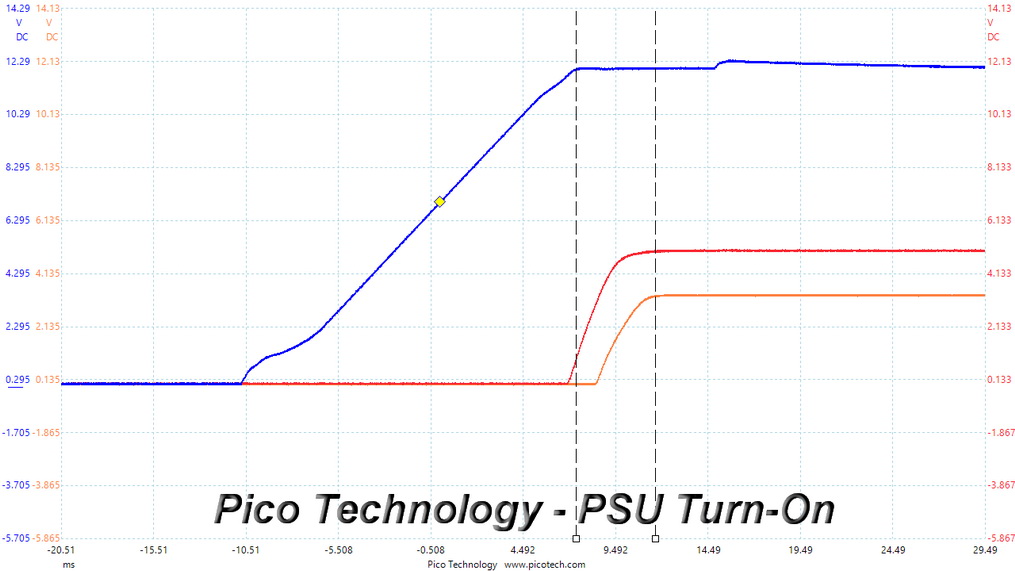

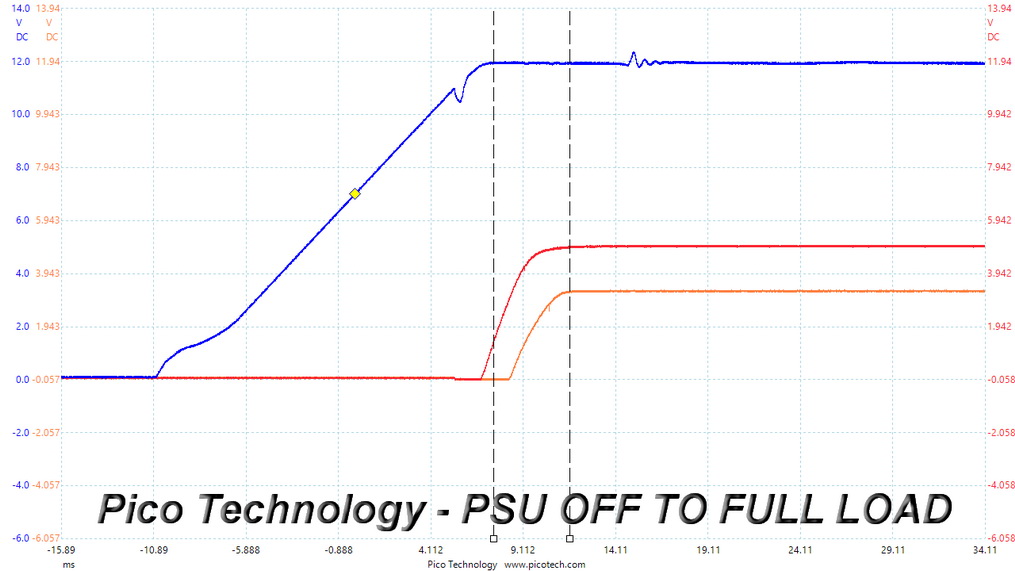
No problems here since the 3.3V rail is always lower than the other two.
Cross Load Tests
To generate the following charts, we set our loaders to auto mode through custom-made software before trying more than 25,000 possible load combinations with the +12V, 5V, and 3.3V rails. The deviations in each of the charts below are calculated by taking the nominal values of the rails (12V, 5V, and 3.3V) as point zero. The ambient temperature during testing was between 30 to 32 degrees Celsius (86 to 89.6 degrees Fahrenheit).
Load Regulation Charts
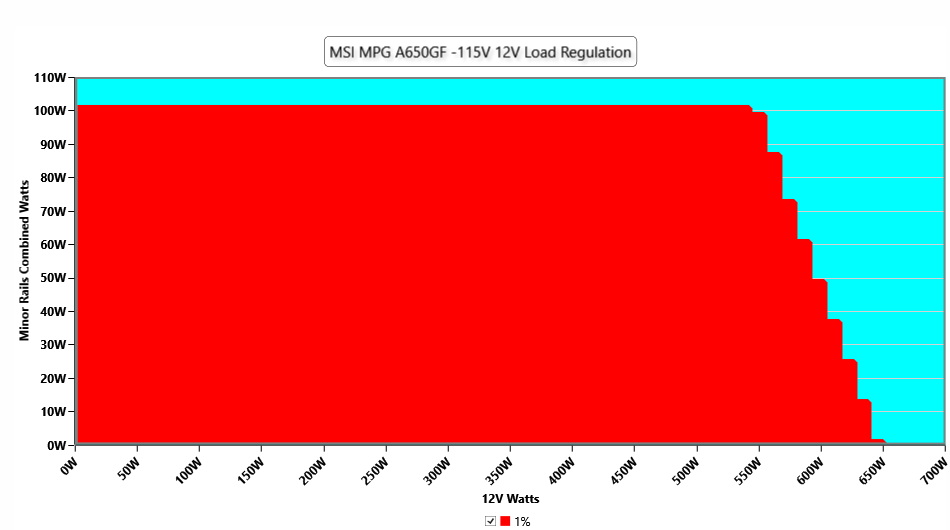
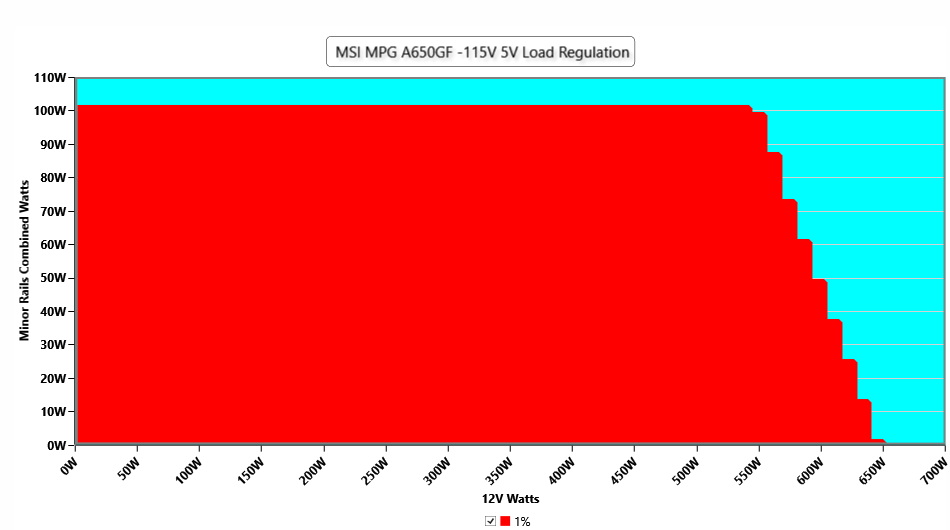
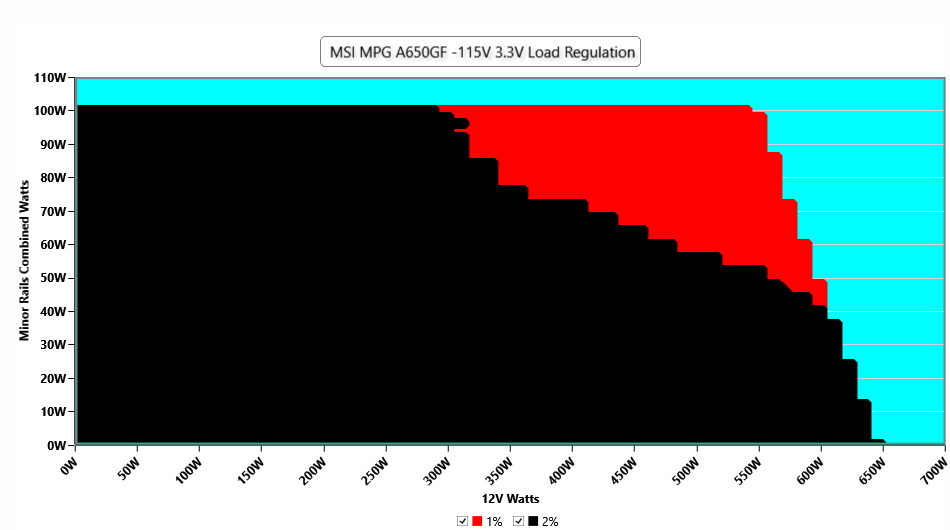
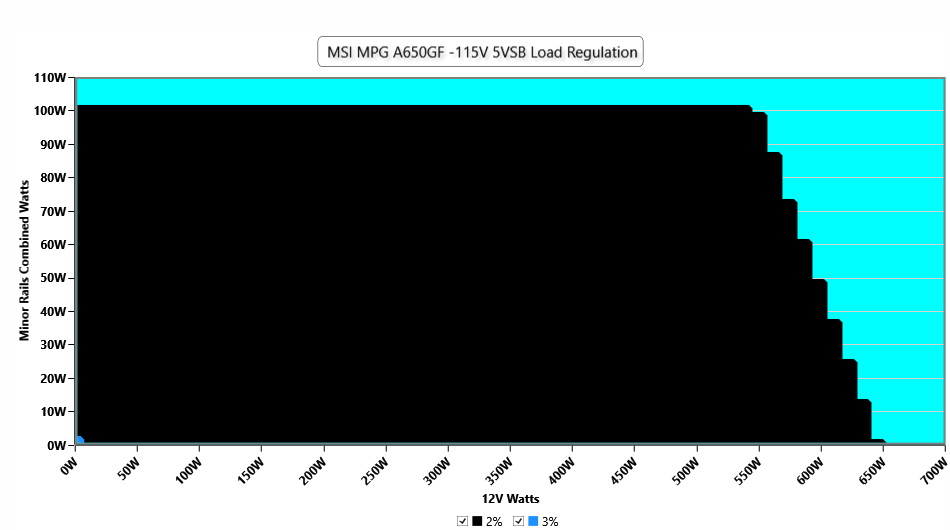
Efficiency Graph
Ripple Graphs
The lower the power supply's ripple, the more stable the system will be and less stress will also be applied to its components.
Get Tom's Hardware's best news and in-depth reviews, straight to your inbox.

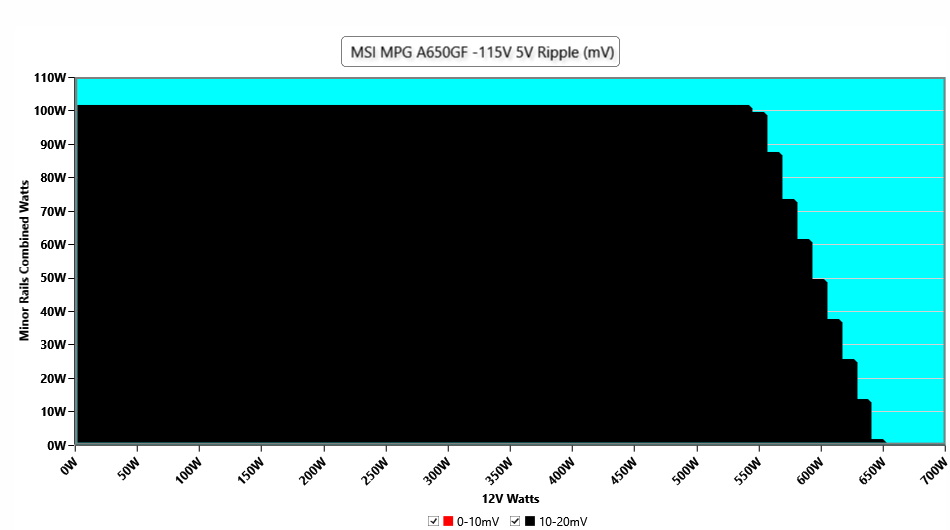
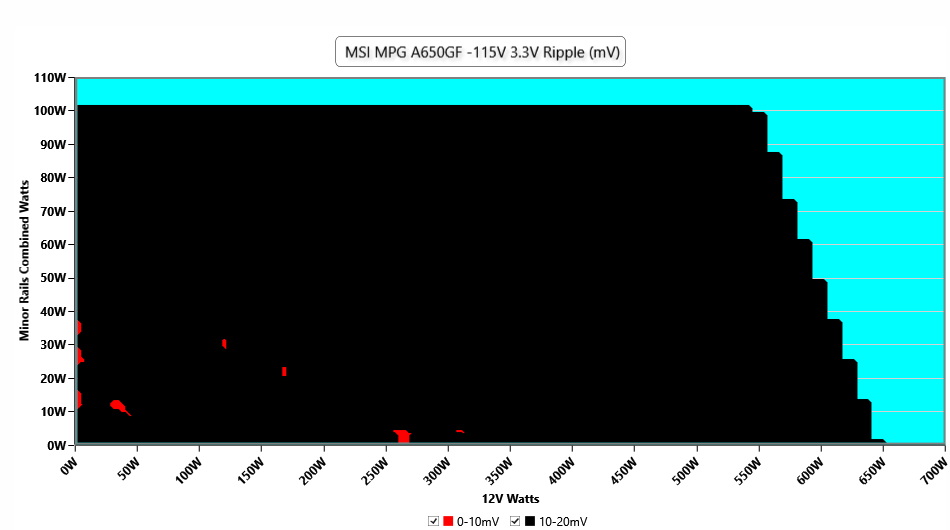
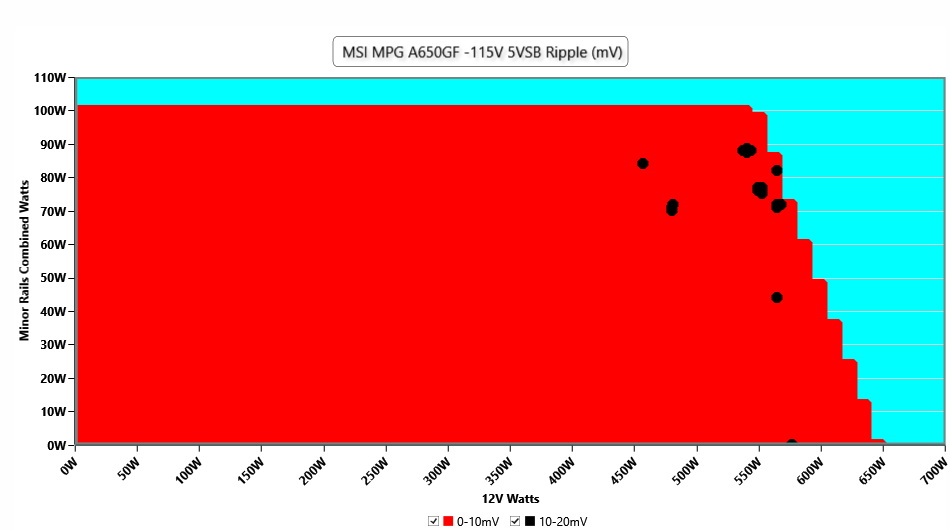
Infrared Images
We apply a half-load for 10 minutes with the PSU's top cover and cooling fan removed before taking photos with a modified Fluke Ti480 PRO camera able to deliver an IR resolution of 640x480 (307,200 pixels).
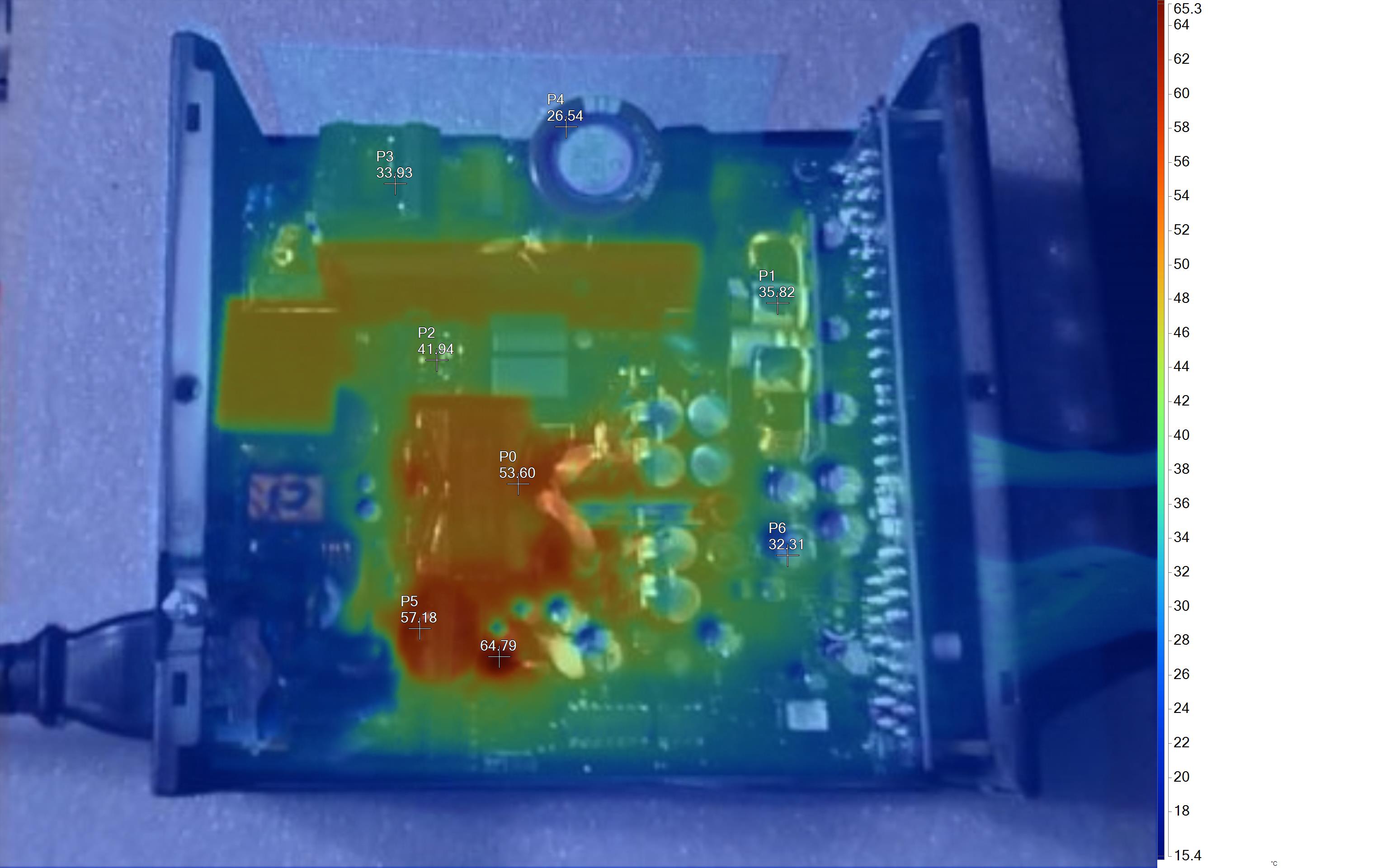
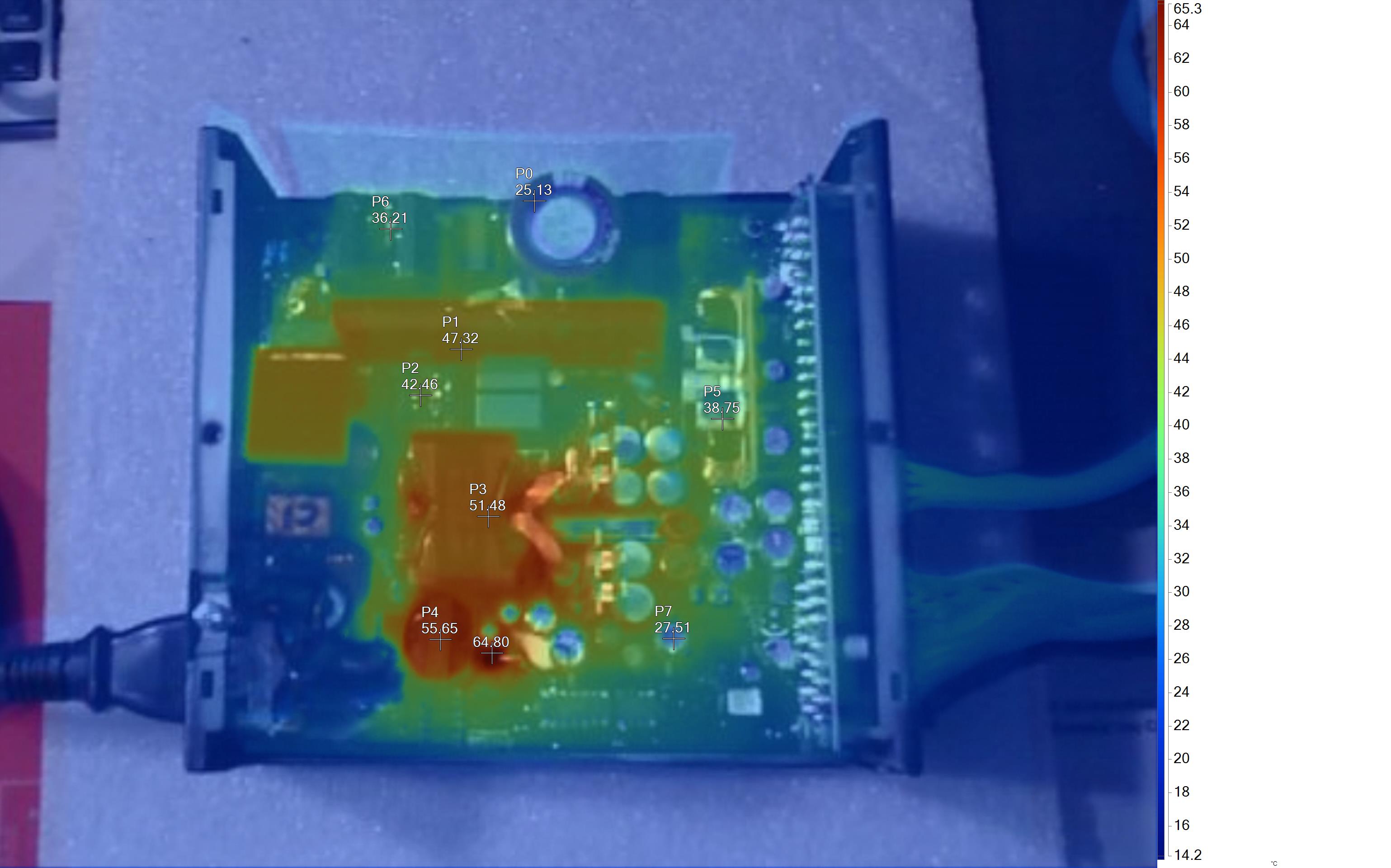
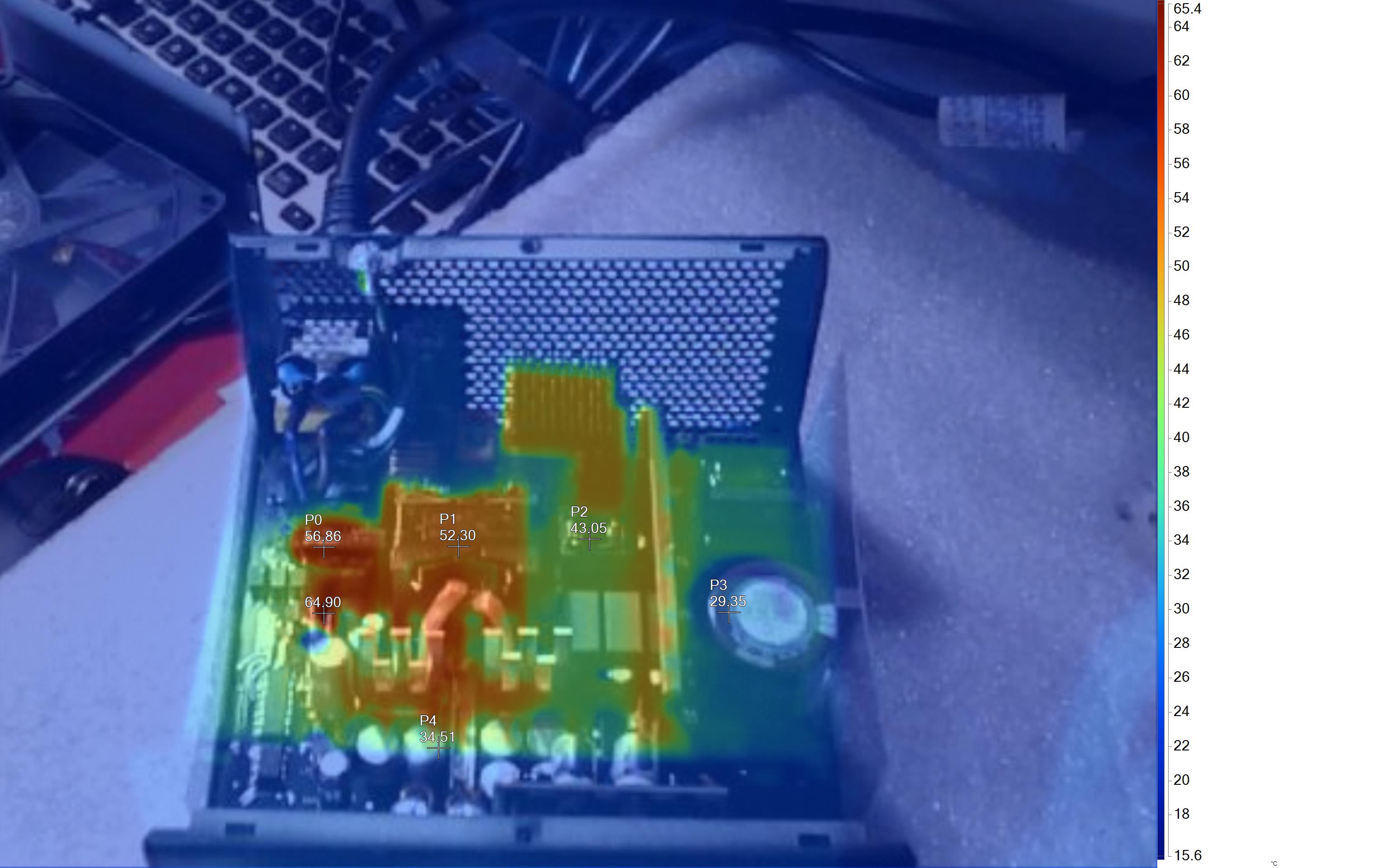
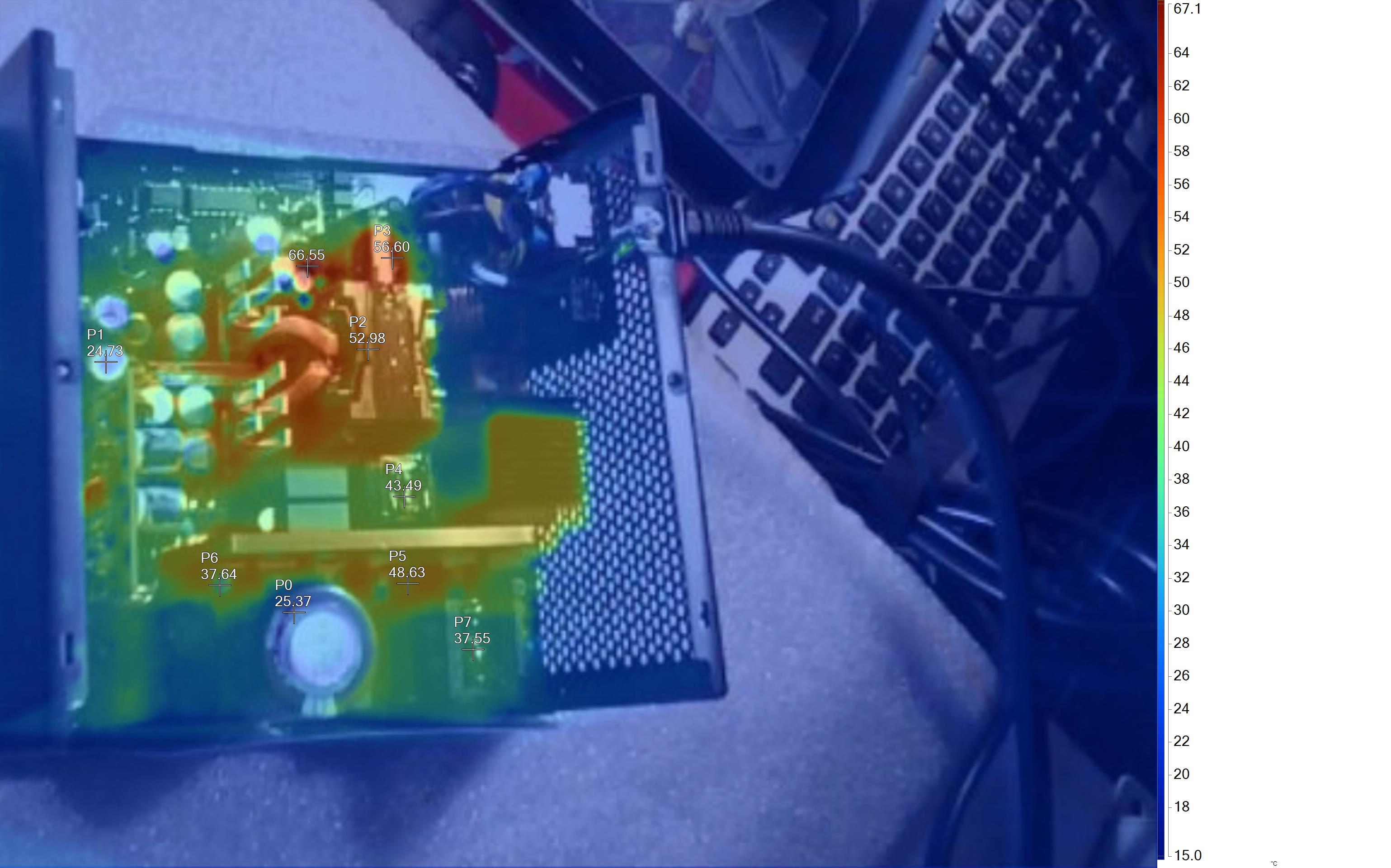
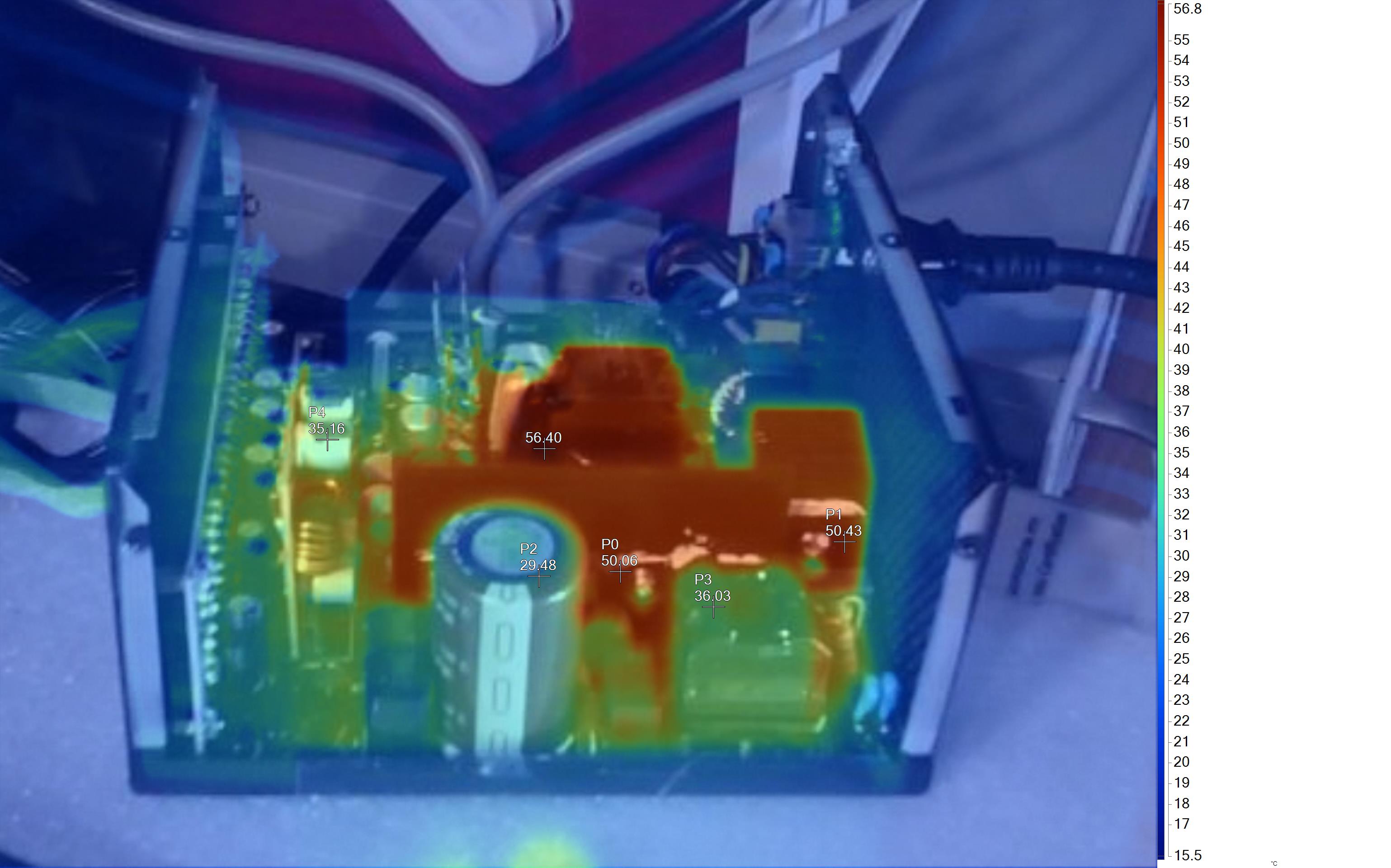
The temperatures are kept low, even without active cooling and half-load for a ten-minute period. The high efficiency and the mid-capacity help play a major role in this.
MORE: Best Power Supplies
MORE: How We Test Power Supplies
MORE: All Power Supply Content
Current page: Protection Features, DC Power Sequencing, Cross-Load Tests and Infrared Images
Prev Page Load Regulation, Hold-Up Time, Inrush & Leakage Current, Efficiency and Noise Next Page Transient Response Tests, Timing Tests, Ripple Measurements and EMC Pre-Compliance Testing
Aris Mpitziopoulos is a contributing editor at Tom's Hardware, covering PSUs.
